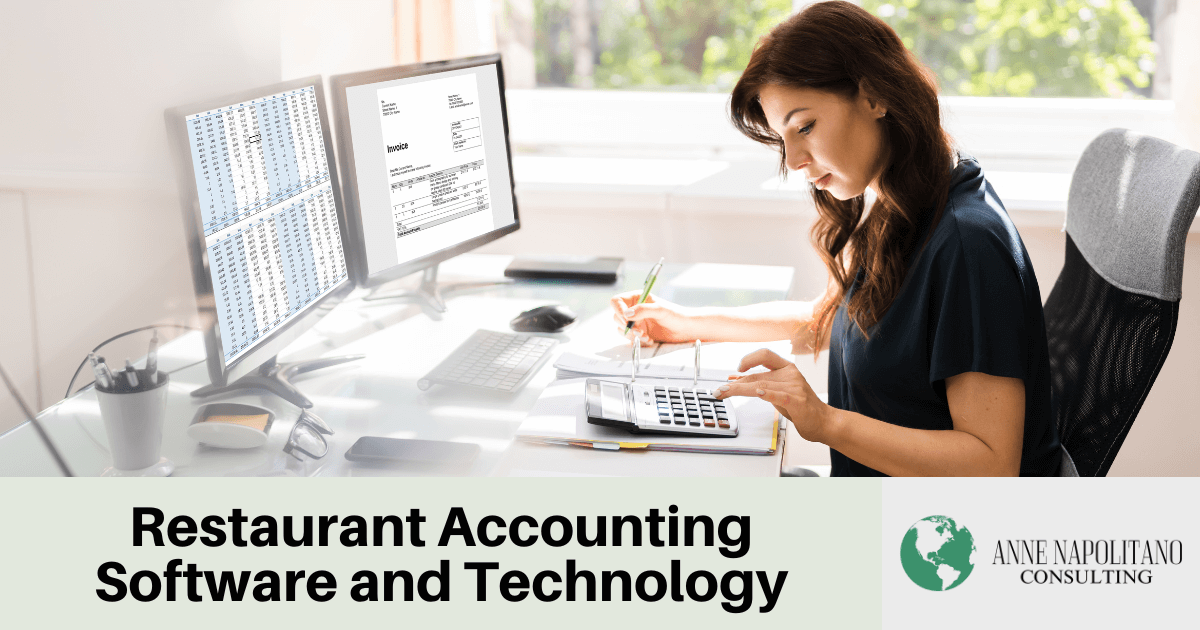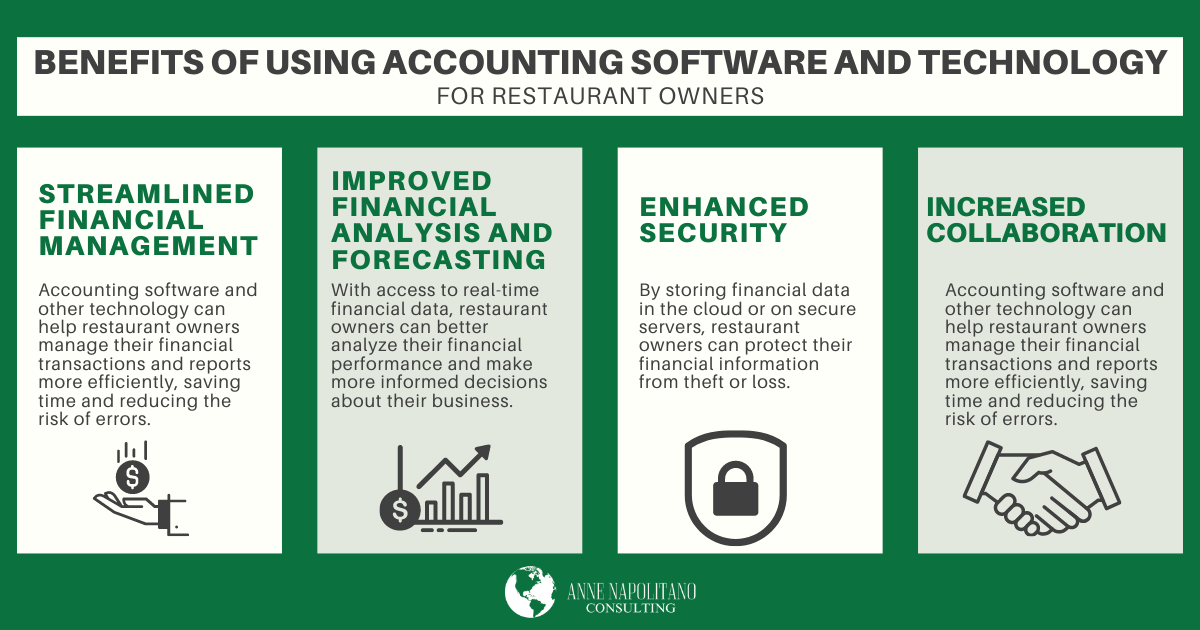
Restaurant accounting software can transform financial management for restaurant owners, offering tools to streamline tasks, optimize cash flow, and support long-term success.
Running a successful restaurant business requires more than just great food and a pleasant atmosphere. Restaurant owners also need to manage their finances effectively to ensure their business’s long-term success. Fortunately, there are various restaurant accounting software solutions available that can help restaurant owners streamline their accounting processes.
Technology has become an integral part of running a successful restaurant business in today’s digital age. So restaurant owners have more options than ever when it comes to restaurant bookkeeping software for accounting, point of sale, and inventory management. From increasing efficiency to ensuring accuracy, using the best accounting software for restaurants can make a significant difference in your business.
What is Accounting Software?
Accounting software is an essential tool for any business, including restaurants. It helps restaurant owners track income and expenses, create invoices, manage payroll, and generate financial reports. By using accounting software for restaurants, owners can save time, reduce errors, and make informed financial decisions.
Cloud-Based Accounting Solutions
One increasingly popular type of accounting software for restaurants is cloud-based, which offers numerous advantages over traditional desktop solutions.
- Accessibility: Cloud-based restaurant accounting software can be accessed from anywhere with an internet connection, enabling restaurant owners to view financial data and inventory reports at any time.
- Automatic Updates: Cloud-based systems typically receive automatic updates, meaning you don’t have to install updates or purchase new software with each release.
- Scalability: Cloud-based accounting software for restaurants is often scalable, making it an excellent choice for small restaurants looking to grow.
- Integration: Many cloud-based software options integrate with POS and inventory platforms, which improves efficiency.
- Cost-Effectiveness: While some cloud-based software requires monthly or annual fees, they can be affordable options for smaller businesses that may not have the budget for extensive restaurant accounting systems.
Cloud-based software is an excellent choice for restaurants. Two popular solutions are Xero and QuickBooks Online.
Xero
Xero is a popular choice in restaurant accounting software for its user-friendly design and flexibility, especially for small to medium-sized restaurants.
- Pros:
- Integrates with many POS and inventory systems, making it one of the best accounting software options for restaurant operations.
- Includes robust reporting and analytics.
- Provides unlimited users at no additional cost.
- Cons:
- Limited customer support options.
- Payroll integration is only available through third-party apps in some regions.
QuickBooks Online
QuickBooks Online is widely recognized as the best accounting software for small restaurants due to its extensive features, integration options, and trusted reputation.
- Pros:
- Provides comprehensive invoicing, expense tracking, and payroll features.
- Integrates seamlessly with various restaurant POS systems and apps.
- Real-time financial tracking supports proactive cash flow management.
- Cons:
- Pricing can be higher than other options, especially with advanced features.
- May have a learning curve for users new to accounting software.
Point-of-Sale Systems
Point-of-sale (POS) systems are computerized systems that manage sales transactions in restaurants. POS systems handle tasks such as order processing, pricing calculations, and inventory tracking.
In addition to streamlining sales, POS systems provide valuable data on customer behavior, such as average ticket size and popular menu items. This data helps optimize pricing and marketing strategies, improving operations.
There are many POS systems available, from basic options for small restaurants to more advanced solutions for larger operations. Popular options include Square and Toast.
Square
Square is simple and user-friendly, making it a popular choice for small restaurants needing affordable restaurant accounting software integrated with POS.
- Pros:
- Affordable, with free and low-cost plans.
- Integrates POS, payments, and inventory.
- Ideal for small operations or pop-up restaurants.
- Cons:
- Limited advanced features compared to restaurant-specific systems.
- May not suit high-volume or multi-location restaurants.
Toast
Toast is a POS system designed specifically for restaurants, offering extensive features for front-of-house and back-of-house operations.
- Pros:
- Tailored to restaurant needs, with menu management and kitchen display functions.
- Integrates with other restaurant software, including inventory and payroll.
- Provides comprehensive sales and labor reporting.
- Cons:
- Higher cost than general POS systems.
- Limited compatibility with non-restaurant apps, so it’s less versatile for non-food businesses.
Inventory Management Software
Inventory management software helps restaurant owners track inventory levels, monitor food costs, and reduce waste. Integrating inventory management with POS and restaurant accounting software automates inventory records and expenses, ensuring accuracy.
One popular option is MarginEdge, which is specifically designed as restaurant bookkeeping software for inventory management.
MarginEdge
MarginEdge offers robust restaurant accounting software for inventory management and cost tracking, making it ideal for restaurant owners focused on managing food costs.
- Pros:
- Real-time tracking of food costs and inventory levels.
- Integrates with POS and accounting systems, including QuickBooks.
- Simplifies invoicing and vendor payments.
- Cons:
- Higher cost compared to more general inventory tools.
- Primarily focused on inventory and cost management, with fewer accounting features.
All-in-One Restaurant Management Tools
For restaurant owners looking for a comprehensive solution, all-in-one restaurant management tools offer the convenience of combining accounting, inventory, payroll, and reporting into a single platform. These tools are designed to streamline operations, save time, and provide a holistic view of your restaurant’s financial and operational performance.
Restaurant 365
Restaurant 365 is a leading all-in-one restaurant management tool that integrates accounting, inventory management, payroll, and operational reporting. It’s designed specifically for the restaurant industry and helps owners simplify complex tasks while improving overall efficiency.
- Pros:
- Combines multiple features, including accounting, payroll, inventory, and reporting, into one platform.
- Seamlessly integrates with popular POS systems like Toast and Square, as well as other third-party applications.
- Offers detailed insights into profitability, food costs, and labor expenses with real-time reporting.
- Scalable for restaurants of all sizes, including multi-location businesses.
- Cons:
- Pricing can be higher compared to standalone accounting or inventory tools.
- The system may have a learning curve due to its wide range of features.
Restaurant 365 is an excellent choice for restaurant owners who want a centralized system to manage their finances and operations efficiently.
Benefits of Using Accounting Software and Technology
Using the best restaurant accounting software and related technology provides several advantages:
- Streamlined Financial Management: Accounting software and POS systems help owners manage transactions and reports more efficiently.
- Improved Financial Analysis and Forecasting: Real-time access to financial data helps owners analyze performance and make informed decisions.
- Enhanced Security: By storing financial data in the cloud or secure servers, restaurant owners can protect sensitive information.
- Increased Collaboration: Cloud-based solutions and POS systems enable real-time collaboration, supporting decision-making.
Partners in Your Success
Restaurant accounting software can be an invaluable tool for owners looking to streamline financial management, improve analysis and forecasting, and enhance security. By investing in reliable restaurants accounting software, you can free up more time to focus on creating an exceptional dining experience for customers.
Anne Napolitano Consulting is a virtual, tech-forward, full-service accounting and consulting firm offering solutions tailored to restaurants. Your accountant should be a strategic partner, not an outdated, one-size-fits-all service.
Schedule a free consultation with us to discover how you can benefit from customized, innovative accounting and consulting services. We want to be partners in your success.
Frequently Asked Questions
What is the best accounting software for a small restaurant?
The best accounting software for a small restaurant depends on budget and needs. Xero and QuickBooks Online are popular, offering features for invoicing, expense tracking, payroll, and inventory.
Can restaurant accounting software integrate with POS systems?
Yes, many restaurant accounting software options integrate with POS systems, allowing seamless tracking of sales, expenses, and inventory across platforms.
How does cloud-based restaurant accounting software benefit owners?
Cloud-based software allows restaurant owners to access real-time financial data from any location, automate updates, and scale the system as their business grows.
Is inventory management included in restaurant accounting software?
Some restaurant accounting systems, like MarginEdge, offer inventory management, helping restaurants track ingredients, monitor food costs, and reduce waste.
Why should restaurants consider using specialized accounting software?
Specialized accounting software for restaurants streamlines financial tasks, improves reporting accuracy, and integrates with industry-specific systems like POS and payroll, providing better insights into business performance.

